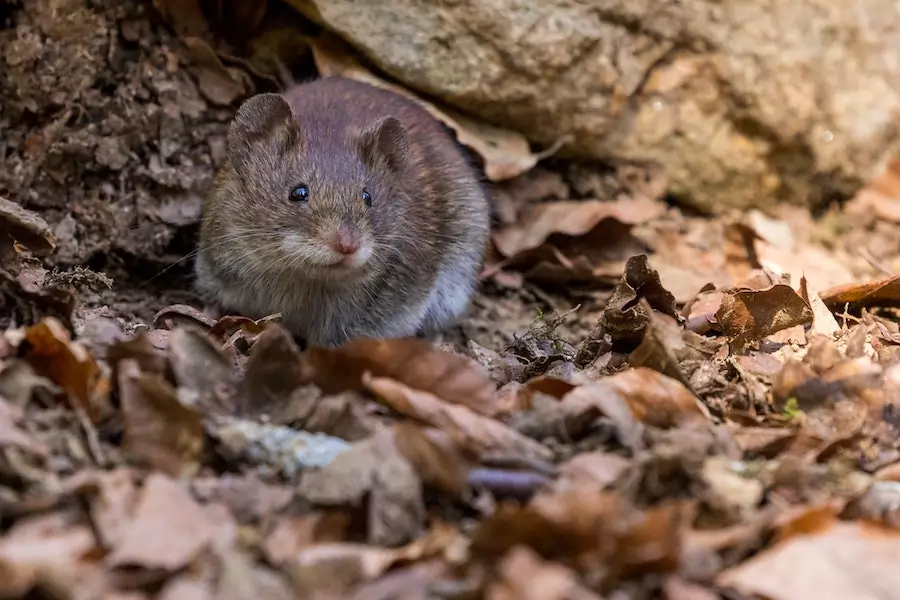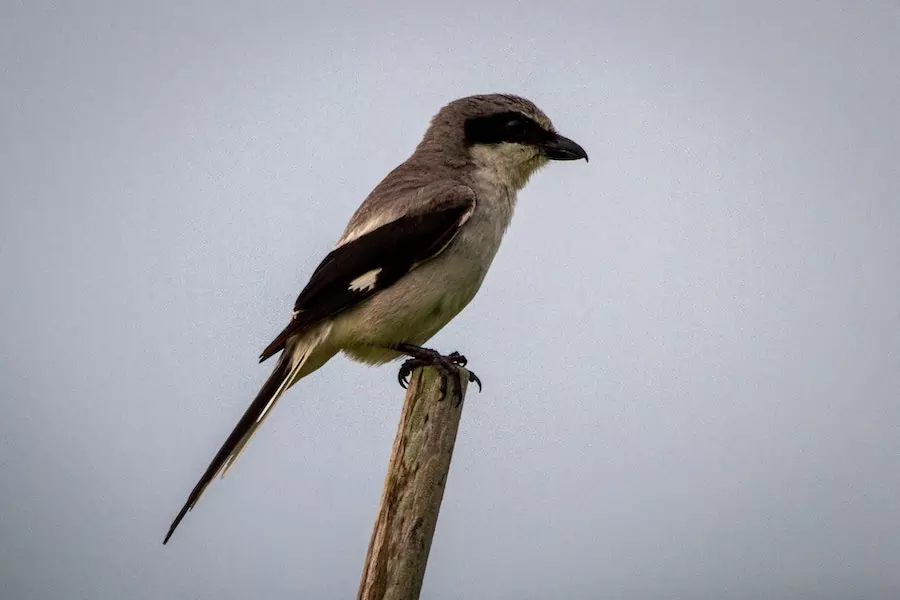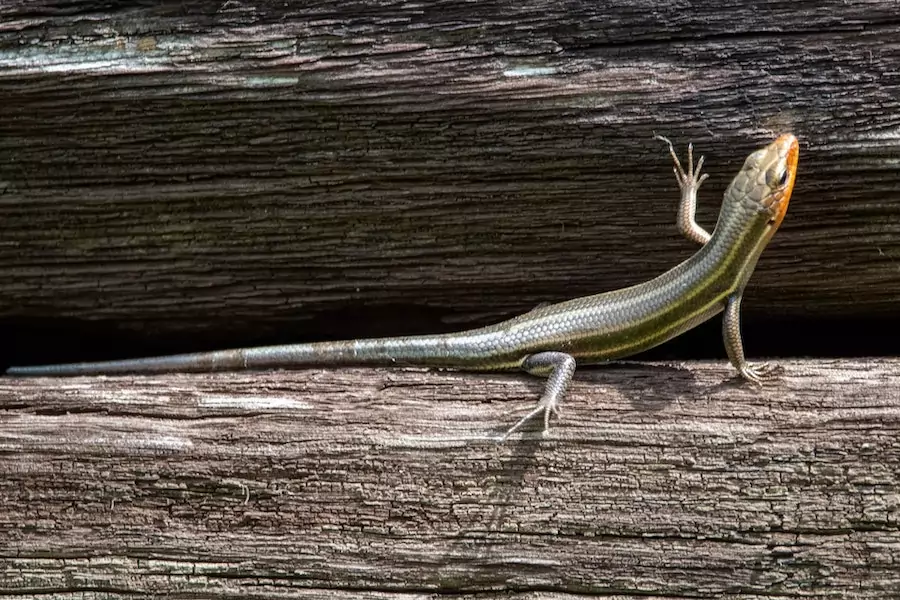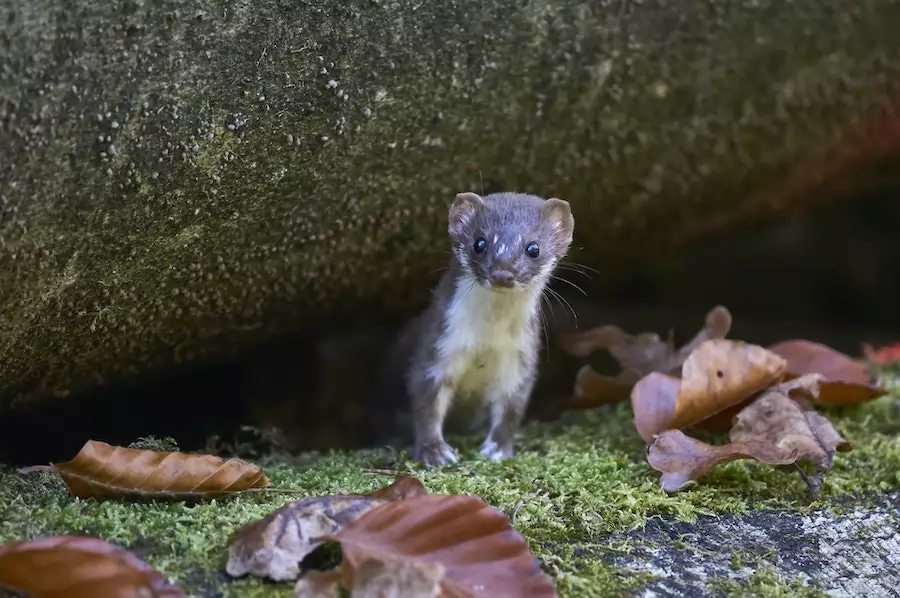Mouse predators help control the mice population. They include regular and occasional hunters. Here’s where we go through the complete list of mouse predators. Starting with a quick summary.
Mouse predators include Birds of prey such as falcons, owls, hawks, and herons. Reptiles like snakes, and bearded dragons. Mammals and other animals; mongoose, weasels, and skunks, minks, wolves, cats, and foxes. Not forgetting traps and poisons laid down by humans to combat mice infestations.
According to the CDC, mice, (and rats) help spread over 35 diseases worldwide. They are the carriers of so many nasty diseases such as; salmonellosis, rat-bite fever, and many others.
These predators eat mice and help control the overall mouse population, which would other explode out of control. It’s part of the natural balance of nature.
Research tells us that a mouse reproduces 5 -10 times a year and gives birth to an average of 4-12 pups. So it’s understandable that there would be numerous predators for all these offspring …and plenty of mice as a food source to cater for mice predators. In fact, it’s because of numerous predators that mice are so prolific at breeding.
To get into more of the details, you can either view the video for this topic which is from our Ranger Planet Youtube Channel. Or continue reading the article.
Animals that are mouse predators
Before diving deeper into the details of mice predators, the list given below will give you a wide array of animals within the animal kingdom that eats mice.
Mice and indeed rats are the favorite morsels of many omnivores and carnivores. Mice are relatively easy to catch and are largely defenseless. Here’s the list of what eats rats.
Some consume them as snacks, while for some, they are a primary food source.
Birds of prey eat mice
- Hawks
- Crows
- Eagles
- Blue jay
- Heron
- Falcons
- Owls
- Shrikes
Reptiles eat mice
- Snakes
- Large lizards
- Geckos
- Bearded dragon
- Skinks
- Monitor lizards
Mammals and other animals eat mice
Field mice live in similar habitats and have similar predators. Here’s more about the field mouse. Plus learn more about the dormouse.
Let’s go through some of these categories in more detail, starting with birds…

Mouse predators: birds that eat mice
Eagles, hawks, owls, blue jay, herons, and shrikes are birds of prey. Some, like the owl, hunt mice regularly at night. While others like to prey on mice from high up, and in broad daylight.
For many birds of prey, mice are an important and sometimes primary source of nutrition among their available prey.
Hawks (Buteo jamaicensis) hunt and eat mice
Red-tailed hawks are common in Mexico and the USA. These intelligent mouse predators track their prey from up to half a mile away, and sometimes from high up. They ambush them as soon as the moment is right to strike.
Hawks use their sharp talons to catch and kill their prey with claws. An average red-tailed hawk can eat 28 large mice per week.
Interesting Fact:
Hawks mate for their entire lifetime. They perform aerobatic maneuvers in the air to entice female hawks. Find out if ducks mate for life or even do wolves mate for life.
Owl (Tyto alba) hunt and eat mice
Mice are the top and basic food for barn owls. These night-time predators are intelligent and cunning enough to hunt their prey.
In addition, they have sharp eyesight, which enables them to locate quarries even in the darkest. Owls have a natural and voracious appetite for mice, and hence they are extremely dangerous for mice. Owls can eat up to 12 mice in one night.
Barn owls are widespread and can be found in North America, Europe, South America, India, Africa, Australia, and Southeast Asia.
Falcons (Falco sparverius) hunt and eat mice
The American Kestrel is the smallest of the family of falcons.
It is widespread in North America and found in woods, open, semi-open areas.
The peregrine and kestrel like to prey on mice and small mammals to fill their appetite. First, however, they’ll eat whatever they prey on. An average peregrine falcon consumes 70 grams of food per day.
Interesting Fact
Falcons have a triangular-shaped tooth called a “tomial” tooth and are the world’s fastest birds. Here’s more about which birds have teeth.
Shrikes hunt and eat mice
Loggerhead Shrikes is a passerine bird, which mostly includes songbirds, and is in the family Laniidae. This tiny creature predominantly likes to hunt insects, lizards, and rodents.
The Shrikes’ main habitat is North America. It bites on the back of the mouse and shakes it until it is injured and unable to escape and is therefore ready to consume.
Interesting fact
The Shrike bird is also known as ”the butcher bird” because it kills its prey by impaling them on barbed wires or any sharp objects.

Blue jay, herons, ravens, and crows hunt and eat mice
Other birds of prey include bluejay, heron, crows, and many more who are carnivorous or omnivorous. They are also mouse predators.
Herons – are a top predator of small mammals and rodents and herons surprisingly also eat many other animals.
Bluejay – will feed on insects, lizards, and mice. Their winter meal includes nuts, corn, seeds, and berries.
Crows and ravens by contrast will eat anything that’s dead, known as carrion. They also actively hunt for insects, lizards, rodents, and mice as part of their daily diet.
Mouse predators: reptiles that eat mice
For some reptiles, the primary staple food is mice only. While for some, it’s a healthy snack.
Snakes, lizards, tuatara, leopard geckos, and bearded dragons are among the reptiles that actively predate both mice and rats.
Snakes ambush and eat mice
Snakes are natural mouse predators. There are species of snakes that consume mice as their primary staple food and source of nutrition.
The Rat snake, black rat snakes, or eastern rat snakes hunt mice and rats daily to fulfill their hunger demand. Snakes generally consume rodents, squirrels, small mammals, and birds. They primarily ambush and constrict their prey first to pacify or incapacitate them, before consuming them.
- Rat snakes are non-venomous.
- The rat snake population is found throughout North and South America.
- Rat snakes don’t eat often, they usually consume once a week or twice every two weeks.
Ball python – also consumes mice. They are mainly found in western and central Africa
According to ANU researchers, snakes have been used as natural mice population control for centuries.
Lizards ambush and eat mice
The larger lizards will eat mice, rats, and other rodents like groundhogs, alongside their usual diet of insects, and birds.
Take a look at what a groundhog eats.
Geckos, skinks, monitor lizards, and bearded dragons will all readily eat mice as well as rats.
However, they cannot compete with the larger predators. Nevertheless, if they get a chance, they’ll feed on mice and rats.
- Bearded dragons are non-venomous but aggressive and are native to Australia
- Geckos are small lizards found almost everywhere except Antarctica. They are harmless to humans.
- Skinks are ground dwellers and are found in more temperate regions of the world.

Mouse predators: animals and mammals that eat mice
The animals or mammals are from the most significant natural predator family. They eat mice whole, and some consume rats voraciously while some cook them.
Cats (Feline) will hunt, play with, and eat mice
Cats are well known for being the number one enemy of mice. However, many domesticated cats will not eat their captured prey as there is no need when food is in plentiful supply at home. However, some cats such as feral cats will eat both mice and rats.
Because most domestic cats do not need to eat mice, they mostly play and toy with them. Cats are instinctive and adept hunters, hence why even domestic cats feel compelled to chase mice.
African Wild cats typically eat mice, rats, and other rodents.
- They are found in West and Central Asia, Africa, Africa, Xinjiang, in China.
- The African cat is a nocturnal animal.
- An Average wild cat will eat about eight mice per day.
- A domestic cat lives for up to 20 years, while a wild cat lives for 15 years.
Canids- dogs, wolves, jackals all hunt and eat mice
wild dogs like to catch mice as their prey, however, they do not provide sufficient sustenance to be a primary part of their diet. Pet dogs will generally only chase and run after mice and are highly unsuitable for them to eat.
Besides wild dogs, jackals, wolves, foxes, coyotes, dingos are also mouse predators but again, not as a staple element of their diet. Terriers though, along with a few other breeds are particularly good hunters of small underground mammals.
Jackals tend to be opportunistic hunters. They will eat anything they find suitable for food, which includes mice – and rats. They also consume dead and leftover food from other animals. Arctic foxes will break through snow to pursue small mammals.
Jackals are found in open savannas, deserts, and arid grasslands or woodlands, and moist savannas, bushland areas, woodlands, or mountain regions.
Foxes and raccoons are omnivores. They will often incorporate rodents, voles, mice, and rats into their diet. Foxes often kill more than they need to, known as surplus killing. Here’s a complete list of what a fox eats.
Mice rats and rodents are a favorite food among red foxes. An average fox can eat up to 1-2 pounds or 8-9 mice per day.
Wolves are the meat-eaters. They prefer to hunt and eat hoofed mammals. But as they are carnivorous, they will prey upon mice, and rats, as well as rabbits and foul. Find out the full list of what a wolf eats here.
Weasels, skunks, minks, and ferrets hunt and eat mice (and rats)
Mice, rats, and rodents are a primary staple of the weasel and skunk diet. Weasels are also natural night predators.
Weasels and ferrets are quick and smaller in size. They are slim enough to enter inside mice burrows and hunt a large amount of prey. An average weasel devours 2-3 mice per day. And ferrets can consume 3-4 large rats.
Minks are larger and also eat mice when they catch them. Here’s the full list of what a mink eats.
Weasels are mainly found in central and East Asia, while ferrets are found throughout North America. Check where skunks live here.

Humans also hunt and sometimes eat mice (and rats)
For many of us, mice and rats are pests and vermins.
Yet, at the same time, many cultures from Southeast Asia feast upon rats and mice as an exotic delicacy.
In Malawi, East Africa, people hunt mice in cornfields. Then, cook it. Mouse skewers and dishes are ready food products at the roadside in Malawi and Zambia.
Baby mice are eaten, and wines are served with fermented pinky mice in Korea and China. Laos, Cambodia, Thailand, and many other countries incorporate mice and rats as a part of their diet.
Why do mice have so many natural predators?
There are many natural mouse predators. However, there are some reasons why mice and rats fall as easy prey.
Mice and rats are small in size and are largely defenseless. Because of the range and number of mice predators, the life of a mouse is 5 months in the wild, while in captivity they can live for up to 2 years.
Besides mice predators, there are other ways in which mice are killed. Poison chemicals and rodenticides are used to reduce mice populations and are particularly used where infestations are discovered.
More wildlife…
I hope this has helped to provide an overview of mouse predators. Be sure to check out the other articles below to discover more wildlife information, and more about particular creatures their habitats, and behaviors.
You might also like:
